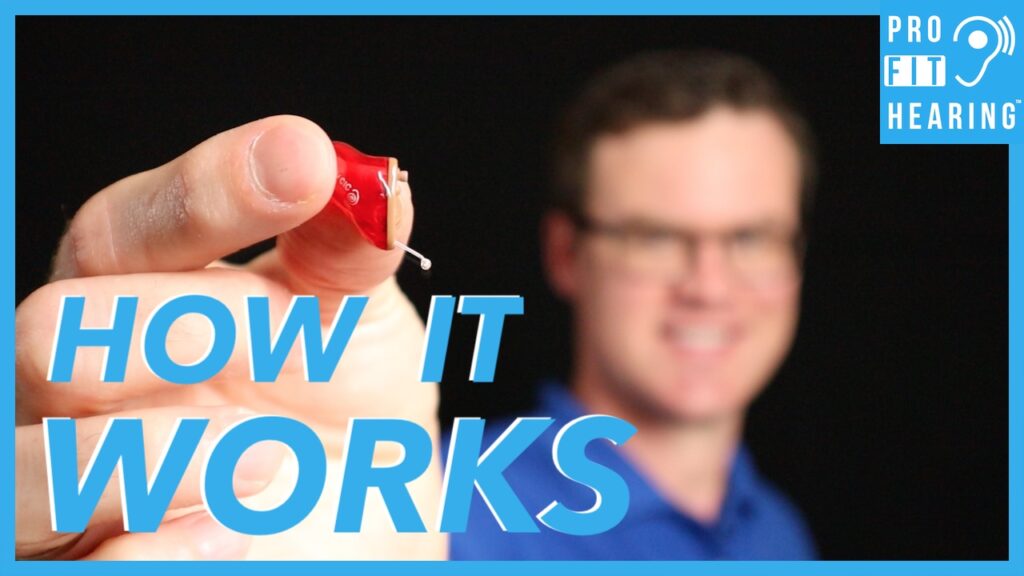How Does A Hearing Aid Work? – Parts of Hearing Aids

How does a hearing aid work?
Have you looked at a hearing aid before and wondered, how does a hearing aid work? Well, in this post I’ll talk about all the parts of hearing aids and how they can help you hear your best. Coming up!
SUBSCRIBE to our YouTube channel for weekly videos! The video link is at the end of this post.
Hi, I’m Dr. Derek – audiologist, audio engineer, and musician with Pro Fit Hearing.com bringing you the best insight into today’s latest hearing aids, headphones, and audio technology to improve your life. If you have concerns about your hearing, always consult with your local physician or audiologist.
Welcome to Question of the Day where I answer your hearing healthcare and audio technology question. Today, I’ll discuss how digital hearing aid technology works.
How does a hearing aid work? – part by part
Hearing Aid Microphone
First, the hearing aid microphone picks up all the sounds in your environment. Most hearing aids use two microphones that work together to help cancel out background noise, so that the person you are facing is easier to understand. The sound that enters the microphone is converted into electrical signals.
ADC – analog to digital converter
The electrical signals from the microphone are sent to an analog to digital converter. This converts the electrical signals from the microphone into a digital signal made up of ones and zeros. This is the language that computers understand. The digital signal is processed by the hearing aid’s computer chip.
Computer chip (aka Amplifier)
A person’s hearing thresholds are programmed into the hearing aid’s computer chip. This small computer within the hearing aid amplifies (or turns up) incoming sound signals to accommodate the person’s hearing loss. For example if you have a high pitch hearing loss, the hearing aid will amplify just those sounds you have difficulty hearing. Each hearing aid company uses unique sound processing to give the hearing aid user the best listening experience.
DAC – digital to analog converter
Once the computer chip has transformed the incoming sound for the person’s hearing loss, that digital signal must be converted back into analog with a digital to analog converter. These analog electrical signals are then sent to the hearing aid speaker.
Hearing Aid Speaker
The hearing aid speaker now plays the amplified sounds into the hearing aid user’s ear for improved speech understanding and ease of communication.
How does a hearing aid work for you?
It’s amazing just how quickly a hearing aid works. This entire process occurs within a few milliseconds. Also, many of today’s latest hearing aids wirelessly transmit sound to and from other devices like televisions, external microphones, and smartphones to help the hearing impaired fully connect to the world around them. If you’ve ever considered hearing aids, now is the time to enjoy today’s latest advances in hearing aid technology!
Question of the Day
So for today’s question, have you ever accidentally dropped or broken a hearing aid and saw the microphone, computer chip, or speaker inside? What other video topics do you want to see? Let’s connect in the comments!
Connect with Pro Fit Hearing on social media. Be a part of the Pro Fit Hearing community!
If you are interested in hearing aids, click HERE for my FREE ebook, “How To Buy Hearing Aids”. Know what to ask your audiologist or hearing aid dispenser so that your hearing aids are easy to use and have all the features you’re looking for.
Remember, Pro Fit Hearing brings you the best insight into today’s latest hearing aids, headphones, and audio technology to improve your life. If you have concerns about your hearing, always consult with your local physician or audiologist.
-Dr. Derek
